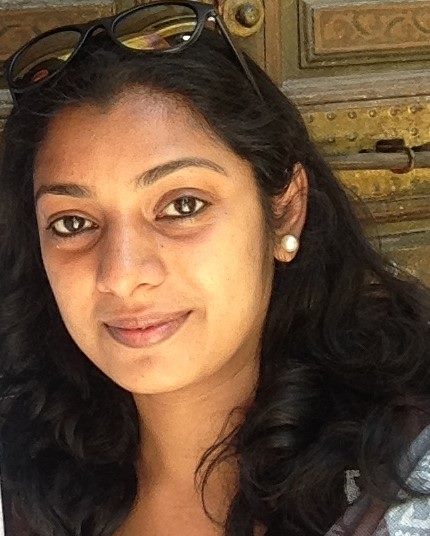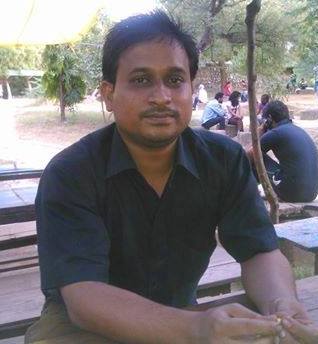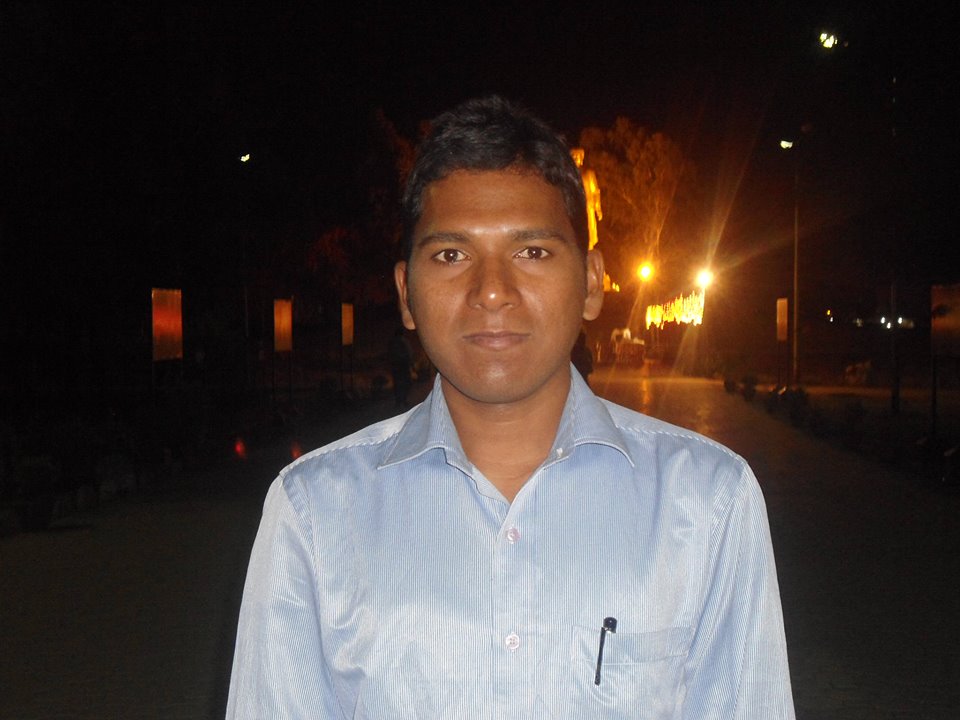Sruthi Herbert
[Talk given at the Manchester Launch of Hatred in the belly: Politics Behind the Appropriation of Dr Ambedkar’s Writings, held on October 6th, 2016]
 It’s an honour to be on this stage with all the others who are here – both in this room and over skype.
It’s an honour to be on this stage with all the others who are here – both in this room and over skype.
In these ten minutes, what I would like to do is to pick two important pieces in this book: the questions to Arundhati Roy by Dalit Camera in their letter, and Roy’s response to it. I believe these shed light on some of the larger questions that need to be discussed, may be not just in this talk but in the future too.
Some of the pointed questions addressed to Roy by Dalit Camera are these: Do you share the view that Dalit activists and scholars are better qualified to introduce AoC both in terms of their engagement with Ambedkar and their life experiences? Another question to Roy was: “Do you feel you are an authority (in terms of your research or involvement in Dalit politics) on Ambedkar and therefore, you are competent to assess Ambedkar’s position on Adivasis, Brahmanism, caste etc? Yet another was: Dalits feel cheated that you and Navayana GOT all the media attention but the title Annihilation of Caste by Dr Ambedkar is just used. Why did you use Ambedkar in this manner? Do you feel now that it is unethical?
When we read this letter to Roy and the questions carefully, we see that the focus of the questions is not on whether Roy, as a non-Dalit person can write. The focus is on her competence to write: as a person who has no prior engagement with the anti-caste struggle, or with Ambedkar, and her ‘using’ Ambedkar and Annihilation of Caste (AoC) to talk about Gandhi, which is simply not the crux of the Annihilation of Caste. The concern expressed in that letter is about the value she brings into her ‘introduction’ of AoC, given her lack of engagement with the anti-caste discourse. Now this is qualitatively different from saying ‘you are a non-Dalit, and you cannot speak about Dalits or Ambedkar’.
But let us see how Arundhati Roy responds to these questions in her reply, also published in this book. She is at pains to portray that the questions posed to her mean that only Dalits can write about Ambedkar. She spends one paragraph wrongly interpreting the issue of representation – now I say it is a wrong interpretation because she writes, “What if tomorrow Gujarati Banias say only they can write about Gandhi? Or Mahars say that their understanding of Ambedkar is more authentic and more radical than that of other Dalits?“
The question of representation is certainly more nuanced than that. When communities that have been oppressed for centuries question the right of members of the oppressor communities to speak on their behalf, it is both assertion and resistance. In very narrowly conflating that with respective caste identities of Banias of Gujarat, a powerful community, Roy is taking the equation of unequal power and resistance out of the issues of representation. This is why I said that her interpretation of the issue of representation is wrong.
Quickly in the next paragraph, she moves from the issue of representation to the issue of ‘authentic victim’. Now, in the letter from Dalit Camera there is no mention of victimhood at all. That letter was not written from a victim position. Instead it was written from a place of knowledge, ownership of struggles, and most importantly, political engagement as equals. Such an engagement has been reduced by Roy into a search for an ‘authentic victim’, and in mentioning the ‘authentic victim’ phrase, she has been devious. Because, in the paragraph where she talks about the ‘victim’, what she dwells on is the ‘privilege’ of the ‘lower castes’ in the caste hierarchy. In short, what she tries to say is that there is no authentic victim because caste is graded and most Dalit-Bahujan people are located somewhere in the graded hierarchy, while only few are right at the bottom. And this she does, by citing no one else, but Ambedkar and his nuanced and powerful understanding of caste! Please find this in page 87 of the book. I think we can write one full-length article about the way in which Roy has not only failed to grasp the working of caste, but also has used some of the most powerful anti-caste writing by Ambedkar against those who have borne the brunt of it over generations, against the very community Ambedkar himself belonged to.
Finally, the key question that Dalit camera raises: about Roy’s research and engagement with anti-caste struggle. This is where Roy’s reply is stunning. Pointing out that Ambedkar’s scholarship spanned several subjects, she asks, “Who can police who is allowed to write about him, comment on his texts, or introduce them, and who is not?” I want to dwell for a moment on this sentence. “Who can police who is allowed to write about him…?“
We have to see what she is doing here. When the oppressed community asserts and questions from a position of equal knowledge, she ascribes a powerful policing role to their questioning. You have to consider that the community that she talks about is one that has been at the receiving end for centuries, one that has been strictly policed: in what they are allowed to wear, where they are allowed to live, what they can eat, what job they can do, who they can marry, and even whether they can have families or not. It is people from this community that are being told that they are acting as the police. This is a curious inversion, but not an innocent one. In presenting those who question her as the ‘police’ – and that is symbolic of oppressive institutionalized power – she is associating them with violence. What an inversion! And what violence on Dalit-Bahujan thought and assertion.
And what is her reply to the repeated queries about her engagement with caste? Arundhati replies, “I am not a Dalit, I am not a Hindu, and I am not an authority on Ambedkar, though I have, unlike many people, including many Dalits, taken the trouble to read him… I am sure there are several scholars, both Dalit and non-Dalit who are better placed to write an introduction to Annihilation of Caste far more knowledgeable than mine. They should go ahead and do so. There is no limit on the number of introductions that can be written. “
What should we make of this reply? She declares that she is not an authority but she has “taken the trouble” to read Ambedkar. For many people, reading Ambedkar is not a trouble. It is liberatory. Clearly then, she is not one of them, and doesn’t see herself as a person who needs to educate herself on anti-caste struggle. Does that mean anti-caste struggle is not her business? That it is the preserve of Dalit-Bahujan, while people like her will remain outside it, writing articles, providing commentaries? It is nothing less than ironic, because Ambedkar had the ‘upper castes’ as audience in mind when the Annihilation of caste was written.
What is also relevant is that she says easily that there are several scholars, more knowledgeable that her who should just go ahead and write their own introductions. This presumes two things: the first is that there is a need for such an introduction. A few authors have discussed this in this book and asked, ‘what is the need for this introduction? What is the purpose served by this introduction that other Dalit scholars and activists did not deem necessary thus far? The second to me is the more disingenuous presumption: that anyone, Dalit or non-Dalit can come up with their own introductions. This is where Arundhati erases her own savarna privilege and celebrity status that gives her access to many mainstream platforms and publishers who are more than willing to host her views. This is where in one smooth sentence, she makes disappear her network of powerful elites and gatekeepers who decide who gets space and who gets heard. The story of the original Annihilation of Caste was no different. It was self-published by Babasaheb Ambedkar. It was taken up, translated and circulated by Dalit-Bahujan people. Not by the elite who control knowledge dissemination. And yet, in her own introduction, Roy has given scant attention to these efforts, not mentioning the history of the publication of the AoC and its translation in regional languages. Here, even as she indulges in erasure of the power differentials between herself and the ‘Dalit-Bahujan’ others who she claims are in the same position to write their own introductions, she herself has benefitted from her privileged networks inaccessible to the Dalit-Bahujan, and has erased their efforts in her own introduction.
The question that we ask then is this: Why is the resistance by the Dalit-Bahujan against this appropriative effort of Arundhati-Roy, and Navayana not taken as an opportunity to reflect on oneself and one’s own privileges? Why instead is it responded to with such shallow unreflective rhetorical pieces that further accuse the Dalit-Bahujan of being the police, and accuses us of being in an ‘authentic victim’ game?
We have to keep in mind that Arundhati concludes her reply by saying that the introduction was written in absolute and complete solidarity with the anti-caste movement. What does this solidarity mean? That we accept uncritically and willingly participate in the convenient erasures of our struggles, the appropriation of our leaders and the verbal violence that is heaped upon us through words like ‘police’ and ‘authentic victim’?
Many of us, Dalit-Bahujan people refuse. This is why I feel it is necessary, and even critical that a book such as Hatred in the Belly should exist. Its existence is that often quoted and clichéd act: of speaking truth to power.
I would like to thank the editors Anu Ramdas and Kuffir Nalgundwar, and all the other Dalit, Bahujan and savarna authors, activists and their families who have worked together to bring out this book and circulate it. It stands up to power.
~~~
Sruthi Herbert is a doctoral candidate at SOAS, University of London.










